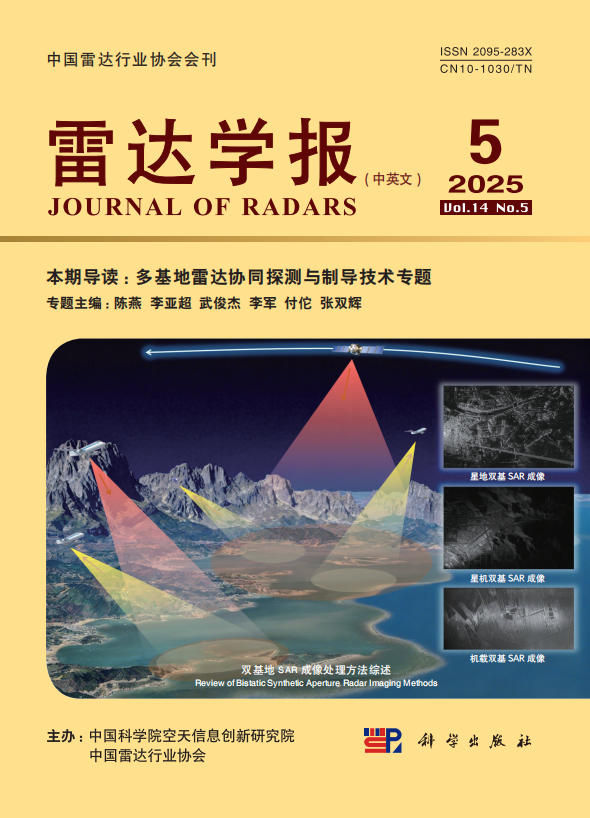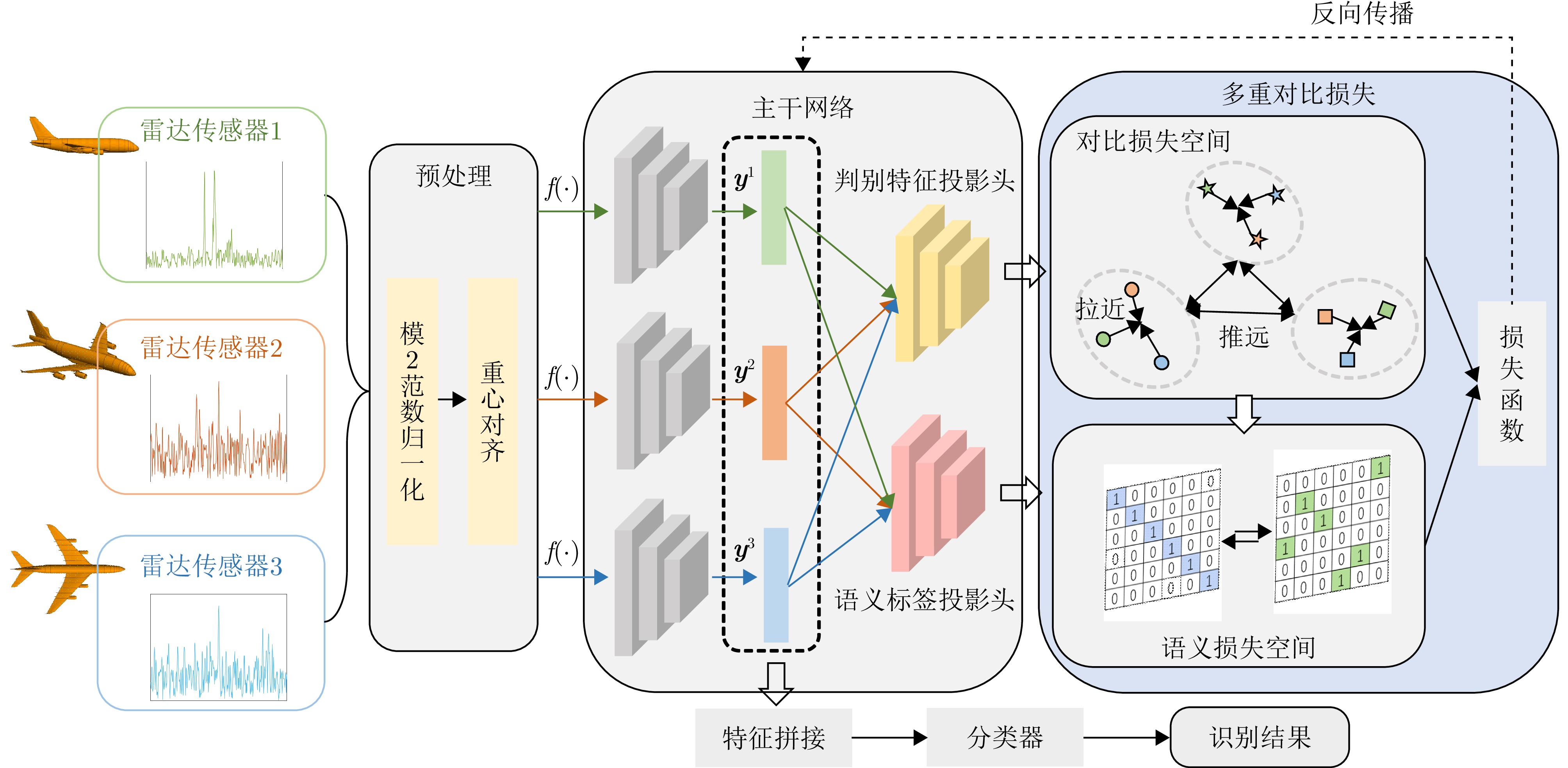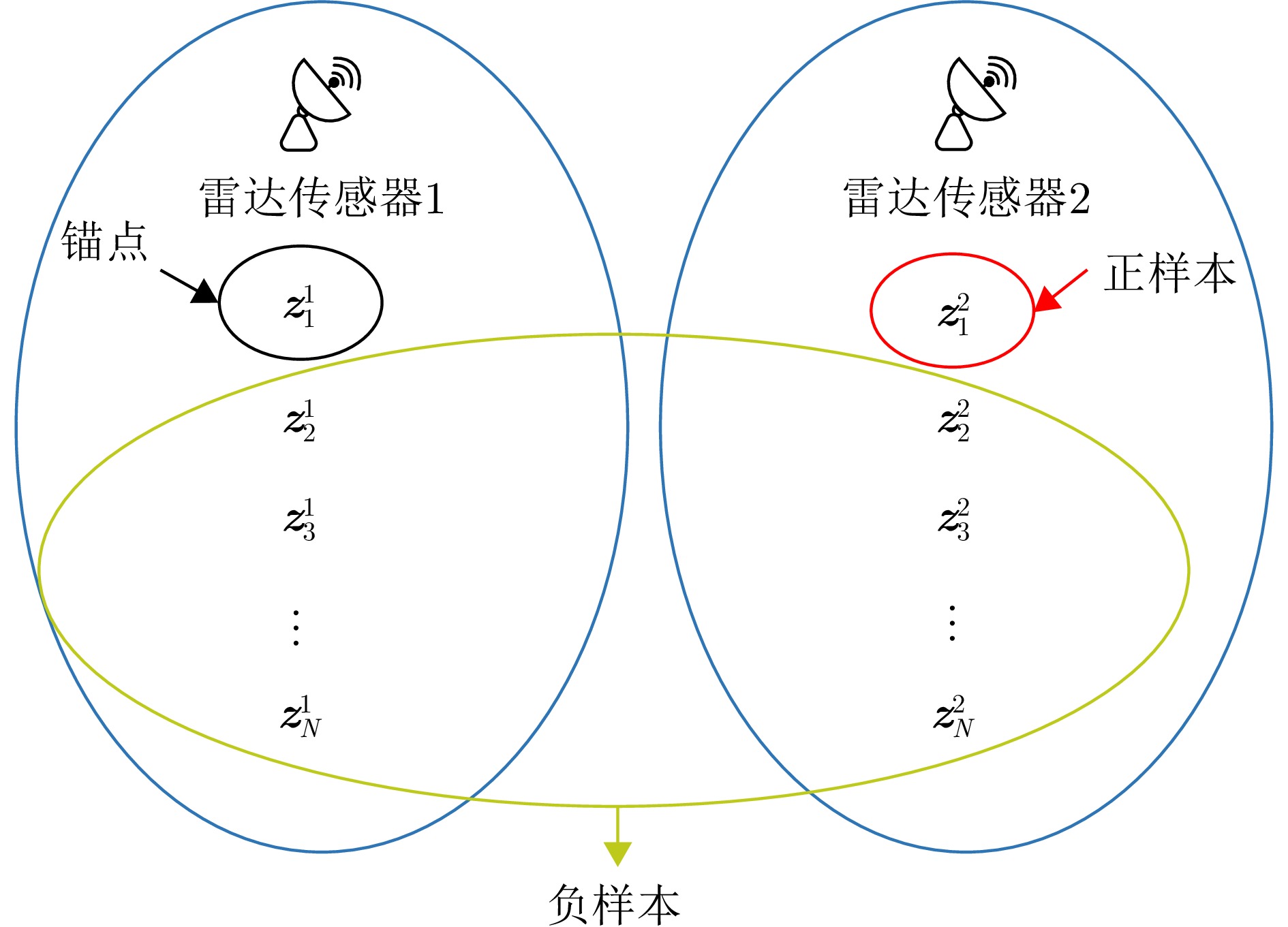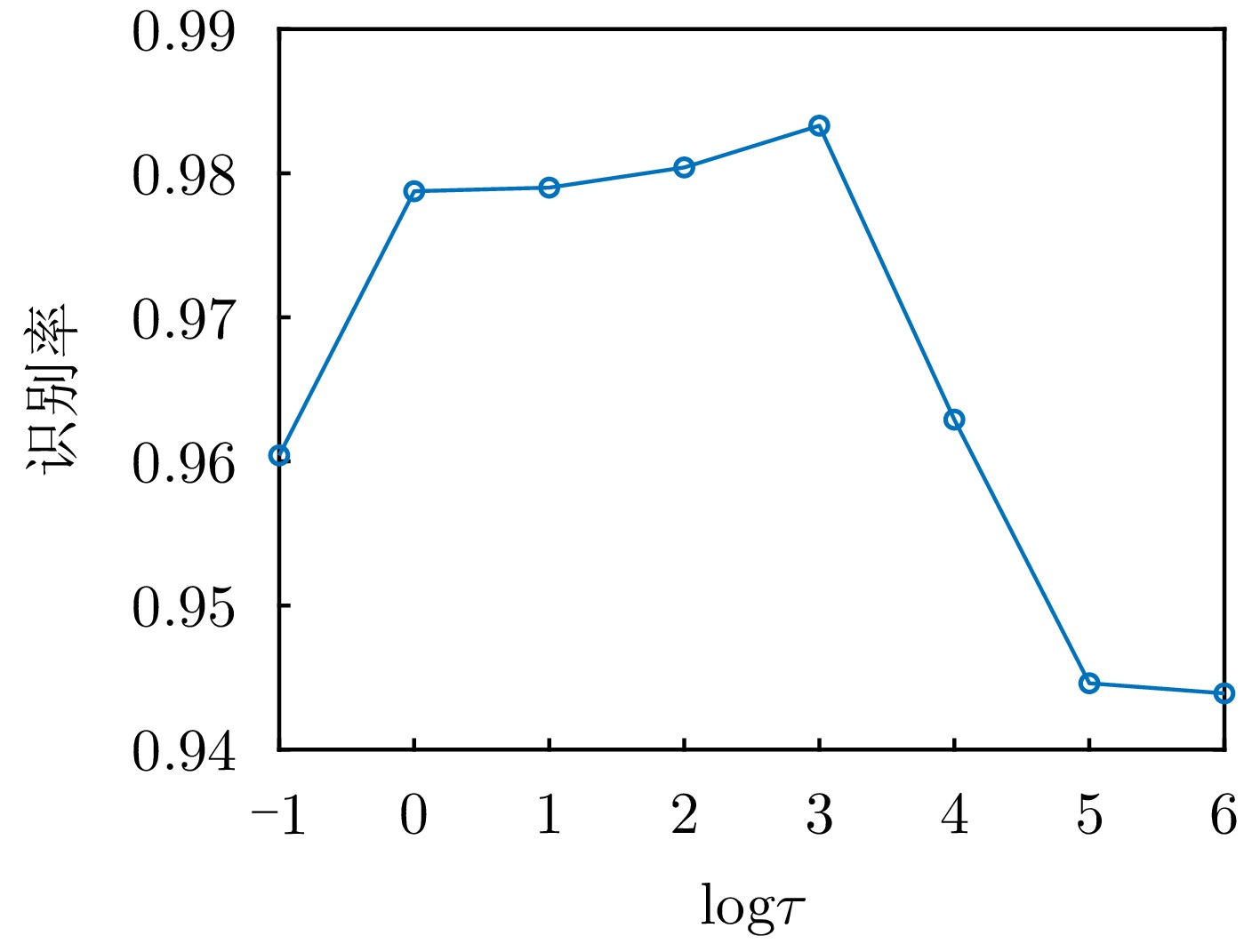| [1] |
陈健, 杜兰, 廖磊瑶. 基于参数化统计模型的雷达HRRP目标识别方法综述[J]. 雷达学报, 2022, 11(6): 1020–1047. doi: 10.12000/JR22127. CHEN Jian, DU Lan, and LIAO Leiyao. Survey of radar HRRP target recognition based on parametric statistical model[J]. Journal of Radars, 2022, 11(6): 1020–1047. doi: 10.12000/JR22127. |
| [2] |
DONG Ganggang and LIU Hongwei. A hierarchical receptive network oriented to target recognition in SAR images[J]. Pattern Recognition, 2022, 126: 108558. doi: 10.1016/j.patcog.2022.108558. |
| [3] |
ZHANG Yukun, GUO Xiansheng, LEUNG H, et al. Cross-task and cross-domain SAR target recognition: A meta-transfer learning approach[J]. Pattern Recognition, 2023, 138: 109402. doi: 10.1016/j.patcog.2023.109402. |
| [4] |
CHEN Bo, LIU Hongwei, CHAI Jing, et al. Large margin feature weighting method via linear programming[J]. IEEE Transactions on Knowledge and Data Engineering, 2009, 21(10): 1475–1488. doi: 10.1109/TKDE.2008.238. |
| [5] |
MOLCHANOV P, EGIAZARIAN K, ASTOLA J, et al. Classification of aircraft using micro-Doppler bicoherence-based features[J]. IEEE Transactions on Aerospace and Electronic Systems, 2014, 50(2): 1455–1467. doi: 10.1109/TAES.2014.120266. |
| [6] |
LI Xiaoxiong, ZHANG Shuning, ZHU Yuying, et al. Supervised contrastive learning for vehicle classification based on the IR-UWB radar[J]. IEEE Transactions on Geoscience and Remote Sensing, 2022, 60: 5117312. doi: 10.1109/TGRS.2022.3203468. |
| [7] |
CHEN Jian, DU Lan, HE Hua, et al. Convolutional factor analysis model with application to radar automatic target recognition[J]. Pattern Recognition, 2019, 87: 140–156. doi: 10.1016/j.patcog.2018.10.014. |
| [8] |
FENG Bo, CHEN Bo, and LIU Hongwei. Radar HRRP target recognition with deep networks[J]. Pattern Recognition, 2017, 61: 379–393. doi: 10.1016/j.patcog.2016.08.012. |
| [9] |
DU Lan, LIU Hongwei, WANG Penghui, et al. Noise robust radar HRRP target recognition based on multitask factor analysis with small training data size[J]. IEEE Transactions on Signal Processing, 2012, 60(7): 3546–3559. doi: 10.1109/TSP.2012.2191965. |
| [10] |
XU Bin, CHEN Bo, WAN Jinwei, et al. Target-aware recurrent attentional network for radar HRRP target recognition[J]. Signal Processing, 2019, 155: 268–280. doi: 10.1016/j.sigpro.2018.09.041. |
| [11] |
SHI Lei, WANG Penghui, LIU Hongwei, et al. Radar HRRP statistical recognition with local factor analysis by automatic Bayesian Ying-Yang harmony learning[J]. IEEE Transactions on Signal Processing, 2011, 59(2): 610–617. doi: 10.1109/TSP.2010.2088391. |
| [12] |
LIAO Leiyao, DU Lan, and CHEN Jian. Class factorized complex variational auto-encoder for HRR radar target recognition[J]. Signal Processing, 2021, 182: 107932. doi: 10.1016/j.sigpro.2020.107932. |
| [13] |
MAO Chengchen and LIANG Jing. HRRP recognition in radar sensor network[J]. Ad Hoc Networks, 2017, 58: 171–178. doi: 10.1016/j.adhoc.2016.09.001. |
| [14] |
LUNDÉN J and KOIVUNEN V. Deep learning for HRRP-based target recognition in multistatic radar systems[C]. 2016 IEEE Radar Conference, Philadelphia, USA, 2016: 1–6. doi: 10.1109/RADAR.2016.7485271. |
| [15] |
章鹏飞, 李刚, 霍超颖, 等. 基于双雷达微动特征融合的无人机分类识别[J]. 雷达学报, 2018, 7(5): 557–564. doi: 10.12000/JR18061. ZHANG Pengfei, LI Gang, HUO Chaoying, et al. Classification of drones based on micro-Doppler radar signatures using dual radar sensors[J]. Journal of Radars, 2018, 7(5): 557–564. doi: 10.12000/JR18061. |
| [16] |
郭帅, 陈婷, 王鹏辉, 等. 基于角度引导Transformer融合网络的多站协同目标识别方法[J]. 雷达学报, 2023, 12(3): 516–528. doi: 10.12000/JR23014. GUO Shuai, CHEN Ting, WANG Penghui, et al. Multistation cooperative radar target recognition based on an angle-guided transformer fusion network[J]. Journal of Radars, 2023, 12(3): 516–528. doi: 10.12000/JR23014. |
| [17] |
吕小玲, 仇晓兰, 俞文明, 等. 基于无监督域适应的仿真辅助SAR目标分类方法及模型可解释性分析[J]. 雷达学报, 2022, 11(1): 168–182. doi: 10.12000/JR21179. LYU Xiaoling, QIU Xiaolan, YU Wenming, et al. Simulation-assisted SAR target classification based on unsupervised domain adaptation and model interpretability analysis[J]. Journal of Radars, 2022, 11(1): 168–182. doi: 10.12000/JR21179. |
| [18] |
WU Zhirong, XIONG Yuanjun, YU S X, et al. Unsupervised feature learning via non-parametric instance discrimination[C]. 2018 IEEE/CVF Conference on Computer Vision and Pattern Recognition, Salt Lake City, USA, 2018: 3733–3742. doi: 10.1109/CVPR.2018.00393. |
| [19] |
ÖZDEMIR C. Inverse Synthetic Aperture Radar Imaging with MATLAB Algorithms[M]. 2nd ed. Hoboken: John Wiley & Sons, 2021: 167–170.
|
| [20] |
DU Lan, WANG Penghui, LIU Hongwei, et al. Bayesian spatiotemporal multitask learning for radar HRRP target recognition[J]. IEEE Transactions on Signal Processing, 2011, 59(7): 3182–3196. doi: 10.1109/TSP.2011.2141664. |
| [21] |
LIAO Kuo, SI Jinxiu, ZHU Fangqi, et al. Radar HRRP target recognition based on concatenated deep neural networks[J]. IEEE Access, 2018, 6: 29211–29218. doi: 10.1109/ACCESS.2018.2842687. |
| [22] |
CHEN Ting, KORNBLITH S, NOROUZI M, et al. A simple framework for contrastive learning of visual representations[C]. The 37th International Conference on Machine Learning, Virtual Event, 2020: 149.
|
| [23] |
WANG Feng and LIU Huaping. Understanding the behaviour of contrastive loss[C]. 2021 IEEE/CVF Conference on Computer Vision and Pattern Recognition, Nashville, USA, 2021: 2495–2504. doi: 10.1109/CVPR46437.2021.00252. |
| [24] |
HE Kaiming, FAN Haoqi, WU Yuxin, et al. Momentum contrast for unsupervised visual representation learning[C]. 2020 IEEE/CVF Conference on Computer Vision and Pattern Recognition, Seattle, USA, 2020: 9729–9738. doi: 10.1109/CVPR42600.2020.00975. |
| [25] |
CARON M, MISRA I, MAIRAL J, et al. Unsupervised learning of visual features by contrasting cluster assignments[C]. The 34th International Conference on Neural Information Processing Systems, Vancouver, Canada, 2020: 831.
|
| [26] |
LI Yunfan, HU Peng, LIU Zitao, et al. Contrastive clustering[C]. The 35th AAAI Conference on Artificial Intelligence, Virtual Event, 2021: 8547–8555. doi: 10.1609/aaai.v35i10.17037. |
| [27] |
PAN Mian, LIU Ailin, YU Yanzhen, et al. Radar HRRP target recognition model based on a stacked CNN–Bi-RNN with attention mechanism[J]. IEEE Transactions on Geoscience and Remote Sensing, 2022, 60: 5100814. doi: 10.1109/TGRS.2021.3055061. |
| [28] |
CHEN Jian, DU Lan, GUO Guanbo, et al. Target-attentional CNN for radar automatic target recognition with HRRP[J]. Signal Processing, 2022, 196: 108497. doi: 10.1016/j.sigpro.2022.108497. |
| [29] |
WU Lingang, HU Shengliang, XU Jianghu, et al. Ship HRRP target recognition against decoy jamming based on CNN-BiLSTM-SE model[J]. IET Radar, Sonar & Navigation, 2024, 18(2): 361–378. doi: 10.1049/rsn2.12507. |




 Submit Manuscript
Submit Manuscript Peer Review
Peer Review Editor Work
Editor Work





 DownLoad:
DownLoad:






